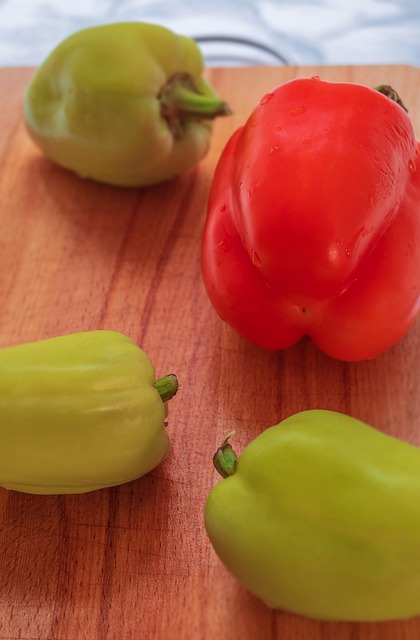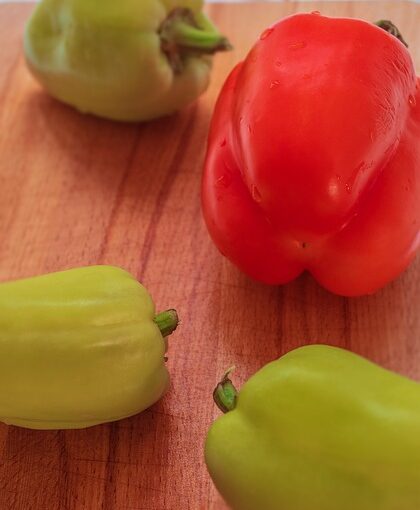Picture this: a sleek, modern white cabinet paired with rustic wooden ones. It’s like wearing a classic white tee with a bold, patterned jacket—unexpected yet totally stylish! Mixing colors and finishes can add depth and dimension to your kitchen, making it feel more inviting and dynamic. You can go for a two-tone look, where the upper cabinets are one color and the lower ones another. This not only breaks the monotony but also draws the eye and creates visual interest.
Now, you might be wondering, “How do I pull this off without it looking chaotic?” Great question! The key is to find a common thread. Maybe it’s a shared color palette or a similar style. For instance, if you have sleek, modern cabinets, you might want to pair them with a slightly distressed wood finish to keep that contemporary vibe while adding warmth. It’s all about balance!
Mix and Match: The Art of Creating a Unique Kitchen Cabinet Style

Mixing and matching cabinet styles isn’t just about throwing random pieces together; it’s an art form. Think of it like creating a delicious recipe. You wouldn’t just toss in any ingredients, right? You’d want flavors that complement each other. The same goes for your cabinets. Pairing a sleek, modern upper cabinet with rustic, farmhouse-style lower cabinets can create a stunning contrast that draws the eye.
Have you ever thought about how textures play a role? A glossy finish on one set of cabinets can beautifully offset the warmth of wood grain on another. It’s like wearing a shiny jacket over a cozy sweater—unexpected yet totally stylish! And don’t forget about color! A bold navy blue can make a statement when paired with soft white or natural wood tones.
But here’s the kicker: don’t be afraid to let your personality shine through. If you love vintage vibes, consider mixing antique-style cabinets with contemporary hardware. It’s all about creating a space that feels like you. So, grab some inspiration from your favorite design blogs or even your travels.
Remember, the kitchen is the heart of the home, and your cabinets are the heartbeat. So, go ahead, unleash your creativity, and let your kitchen tell your story through a unique blend of styles that’s all your own!
Dare to Be Different: How to Successfully Combine Kitchen Cabinet Styles
First off, think about the vibe you want to create. Do you love the rustic charm of farmhouse cabinets but also crave the sleekness of modern designs? Why not mix a distressed wood finish with glossy, minimalist doors? It’s like pairing a cozy sweater with chic leather pants—unexpected yet totally stylish!
Next, consider color. You don’t have to stick to one shade. Picture a bold navy blue island paired with soft white upper cabinets. It’s a visual feast that draws the eye and adds depth to your kitchen. Just like a painter uses different colors to create a masterpiece, you can use various cabinet styles and hues to craft your culinary haven.
Don’t forget about textures! Combining smooth, flat-panel cabinets with textured shaker styles can add dimension and intrigue. It’s like layering your favorite outfits; the more textures you incorporate, the more visually appealing your kitchen becomes.
And let’s talk about hardware. Mixing and matching knobs and pulls can be the cherry on top of your design sundae. Imagine sleek, modern handles on rustic cabinets—it’s a conversation starter for sure!
From Traditional to Modern: Mixing Kitchen Cabinets for a Personalized Look
Think about it: traditional cabinets, with their rich woods and intricate details, can bring warmth and nostalgia. Now, pair those with sleek, contemporary cabinets in a bold color or a glossy finish. It’s like wearing a classic little black dress with a funky pair of sneakers—unexpected, yet totally stylish! This mix not only adds depth but also creates a visual feast for the eyes.
You might wonder, how do you pull this off without it looking like a hodgepodge? Start by choosing a dominant style. Maybe you love the rustic feel of farmhouse cabinets. Then, introduce modern elements—like open shelving or minimalist hardware—that complement your base. It’s all about balance. Think of it as a dance; each style should lead and follow in harmony.
Don’t shy away from experimenting with colors, either! A navy blue island paired with white shaker cabinets can create a stunning focal point. Or how about a pop of pastel on your upper cabinets against darker lower ones? It’s like adding a cherry on top of a sundae—sweet and delightful!
The Ultimate Guide to Mixing and Matching Kitchen Cabinets Like a Pro
First off, think about your color palette. You wouldn’t wear polka dots with stripes, would you? The same goes for your cabinets. Choose a dominant color for the main cabinets and then select a complementary hue for the accents. For instance, if you go with a classic white for your base cabinets, a deep navy or a soft gray for the upper cabinets can create a beautiful contrast that’s both modern and timeless.
Next, consider the materials. Mixing wood finishes can add depth and character. Picture a warm oak island paired with sleek, painted cabinets. It’s like having a cozy campfire surrounded by a chic lounge. Just remember to keep the textures in mind; a smooth finish can balance out a rustic look, creating harmony in your space.
Don’t forget about the hardware! The knobs and pulls are like the jewelry of your kitchen. Mixing metals—like brass with matte black—can add a touch of sophistication. It’s all about those little details that tie everything together.
Lastly, think about the layout. If you have an open-concept space, ensure your cabinet choices flow seamlessly into the adjoining rooms. It’s like creating a visual story that invites guests to explore. So, roll up your sleeves, unleash your creativity, and let your kitchen reflect your unique style!
Cabinet Chaos or Chic Charm? The Pros and Cons of Mixing Kitchen Styles
Imagine walking into a kitchen where rustic wooden cabinets dance alongside sleek, modern ones. It’s like a fashion runway for your home! The pros of mixing styles are pretty enticing. First off, it allows for a unique expression of your personality. You can showcase your love for vintage charm while embracing contemporary flair. Plus, it can create visual interest, making your kitchen a conversation starter. Who wouldn’t want to impress their guests with a space that tells a story?
But hold on—before you grab that mismatched cabinet from the thrift store, let’s talk about the potential pitfalls. Mixing styles can sometimes lead to a chaotic look if not done thoughtfully. It’s like throwing all your favorite ingredients into a pot without a plan; you might end up with a confusing flavor profile. If the colors and finishes clash, your kitchen could feel more like a jumbled mess than a harmonious haven.
Another thing to consider is resale value. While you might adore your eclectic kitchen, future buyers may not share your vision. It’s like wearing a bold outfit that only you love—great for self-expression, but it might not appeal to everyone.
So, is mixing kitchen styles a daring adventure or a risky gamble? It all boils down to your taste and how well you can balance the elements. With the right approach, you can transform your kitchen into a stunning blend of chaos and charm that feels uniquely yours.
Unlocking Creativity: Tips for Mixing Kitchen Cabinets Without Clashing
First off, think about balance. Just like a well-composed song, your cabinets need harmony. If you choose a bold color for your lower cabinets, consider a softer, neutral tone for the upper ones. This creates a visual rhythm that’s pleasing to the eye. It’s like pairing a spicy salsa with a cool guacamole—each enhances the other without overwhelming your taste buds.
Next, don’t shy away from textures. Mixing materials can add depth and interest. Picture sleek, glossy cabinets paired with rustic wood finishes. It’s like wearing a leather jacket over a soft cotton tee—unexpected yet effortlessly stylish. This contrast can make your kitchen feel warm and inviting, rather than flat and monotonous.
Also, consider the style of your home. If you have a modern space, mixing contemporary cabinets with vintage pieces can create an eclectic vibe that tells a story. Think of it as a conversation between old and new, where each cabinet shares its unique history.
Lastly, don’t forget about the little details. Hardware can be the jewelry of your cabinets. Mixing metals or styles can tie everything together beautifully. It’s like adding the perfect accessory to an outfit—suddenly, everything pops!
Transform Your Space: The Trend of Mixing Kitchen Cabinet Colors and Textures
Mixing colors isn’t just about slapping on a few different shades; it’s about crafting a harmonious blend that reflects your personality. Picture this: a deep navy blue island paired with soft, creamy white upper cabinets. It’s a visual feast that draws the eye and sparks conversation. And let’s not forget about textures! Combining matte finishes with glossy surfaces can add depth and intrigue, making your kitchen feel dynamic and inviting.
But how do you pull this off without it looking like a chaotic rainbow? Start by choosing a color palette that resonates with you. Think of it as picking the perfect outfit—balance is key! You might want to anchor your design with a neutral base and then add pops of color for that wow factor. It’s like adding a splash of hot sauce to your favorite dish; just the right amount can elevate the entire experience.
Frequently Asked Questions
Can I Mix Different Styles of Kitchen Cabinets?
Mixing different styles of kitchen cabinets can create a unique and personalized look. To achieve a cohesive design, consider balancing colors, materials, and finishes. Use one style as the dominant theme and complement it with contrasting elements to enhance visual interest while maintaining harmony.
Are There Rules for Mixing Cabinet Materials?
Mixing cabinet materials can enhance design and functionality, but it’s important to consider compatibility in terms of durability, maintenance, and aesthetics. Choose materials that complement each other in color and texture, and ensure they can withstand similar environmental conditions. Proper planning and balance will create a cohesive look while maximizing the benefits of each material.
How Do I Choose Complementary Cabinet Colors?
To select complementary cabinet colors, consider the overall color scheme of your space. Use a color wheel to identify shades that enhance each other, such as contrasting or analogous colors. Test samples in natural light to see how they interact with your walls and furnishings. Aim for balance by mixing light and dark tones, and ensure the colors align with your desired style and mood.
Can I Mix Upper and Lower Cabinet Designs?
Mixing upper and lower cabinet designs can create a unique and personalized kitchen aesthetic. By combining different styles, colors, or finishes, you can achieve a balanced look that enhances the overall design. Consider factors like color harmony, material compatibility, and the overall theme of your space to ensure a cohesive appearance.
What Are the Benefits of Mixing Kitchen Cabinets?
Mixing kitchen cabinets can enhance the visual appeal of your space by creating a unique and personalized look. It allows for the combination of different styles, colors, and materials, which can add depth and character to your kitchen. This approach can also help in optimizing storage solutions by incorporating various cabinet types, making the kitchen more functional. Additionally, mixing cabinets can be a cost-effective way to achieve a high-end design without the expense of uniform cabinetry.
